You spend a ton of money on clothes you love, so prolong the life of your wardrobe by breaking these bad—and all-too-common—storage habits.
What Is the Best Way to Store Clothes?
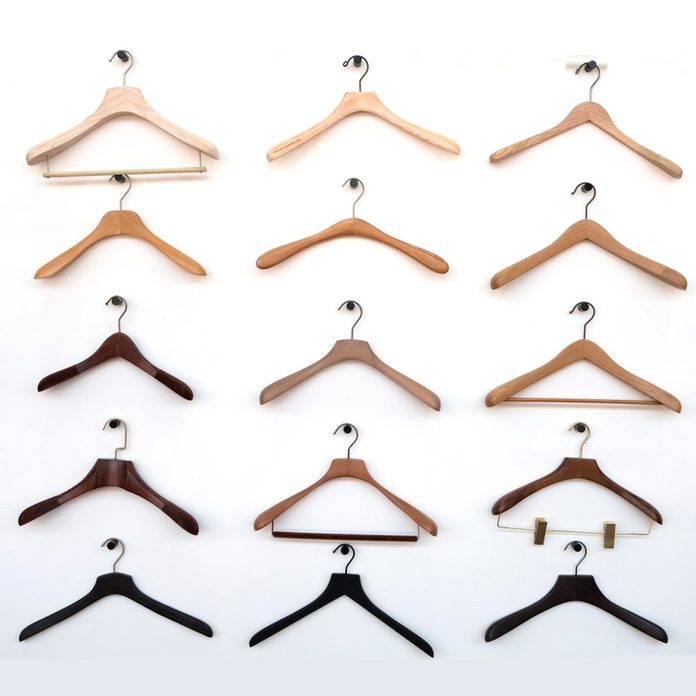
Using the Wrong Hangers
Not all hangers are created equal. A hanger that’s the wrong size, shape, or material can actually harm your clothes. In most cases, the best way to store clothes is on high-quality hangers, so do yourself a favor and invest in some that are suited to your specific wardrobe. Choose a variety of sizes; hangers that are too small encourage wrinkles, and hangers that are too big create those dreaded shoulder bubbles.
Keep delicate items on lightweight, non-slip felt hangers, outerwear on sturdy wood hangers, and suits on actual suit hangers. And while you’re at it, skip metal hangers altogether. They’re too flimsy to do most clothes justice and too slippery for many fabrics. Worst of all, they tend to distort the shape of your clothes.
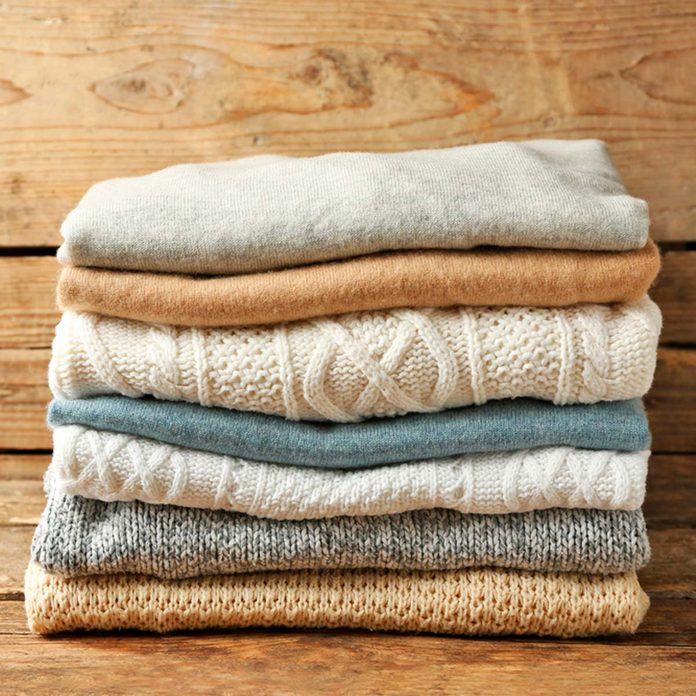
Hanging Sweaters and Other Knitwear
As tempting as it may be, avoid hanging heavy knits at all costs. More likely than not, your wool or cashmere sweater—or even your jersey-knit top—will become misshapen. The risk increases the longer it stays on a hanger.
If you’re short on drawer space, don’t risk ruining your sartorial investments; instead, consider folding and storing your extra sweaters in inexpensive cotton-canvas hanging closet organizers made specifically for sweaters. But if you still insist on hanging your sweaters, try your hand at this shape-preserving hack.
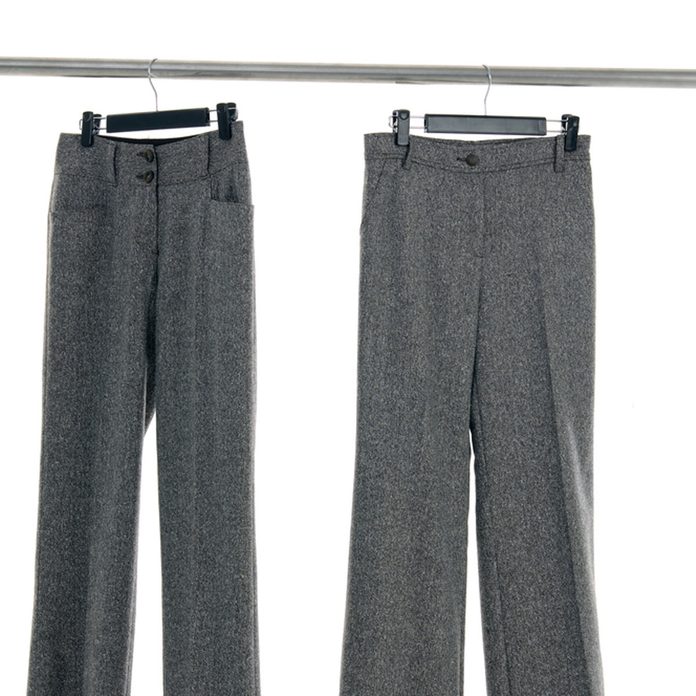
Folding Your Pants In Half, Then Hanging Them
Professional dry cleaners and tailors have a special trick for folding dress pants along their pleat and carefully hanging them with one leg overlapped onto the other. If you’re looking for a quicker, more foolproof everyday method, invest in hangers with felt-lined clips, then hang your pants vertically by the waist or the hem. If you don’t want to buy new hangers, try this bubble wrap hanger hack! It will also help prevent unsightly creases and save you time when you’re preparing for a fancy occasion.
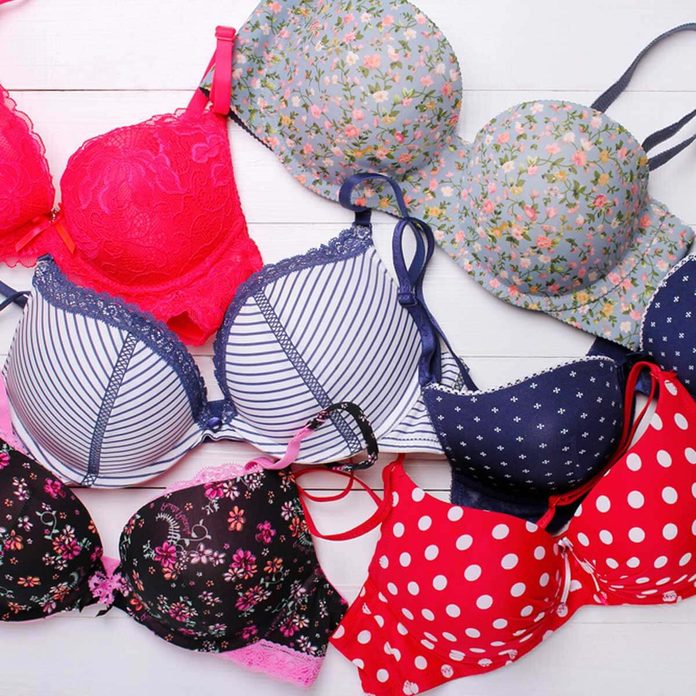
Folding Your Bras
Bras are easy to destroy. All you have to do is put them through the spin cycle one too many times and they’re stretched out for good. Help your delicate bras keep their shape and elasticity as long as possible by taking your cue from lingerie shops: store your bras flat—not folded in half—in a shallow drawer to preserve their shape, and don’t store anything on top of them.
While apartments and other small spaces often come with limited storage, it’s better to dedicate some space to these expensive foundational garments. Bras cost way too much to justify not caring for them correctly.
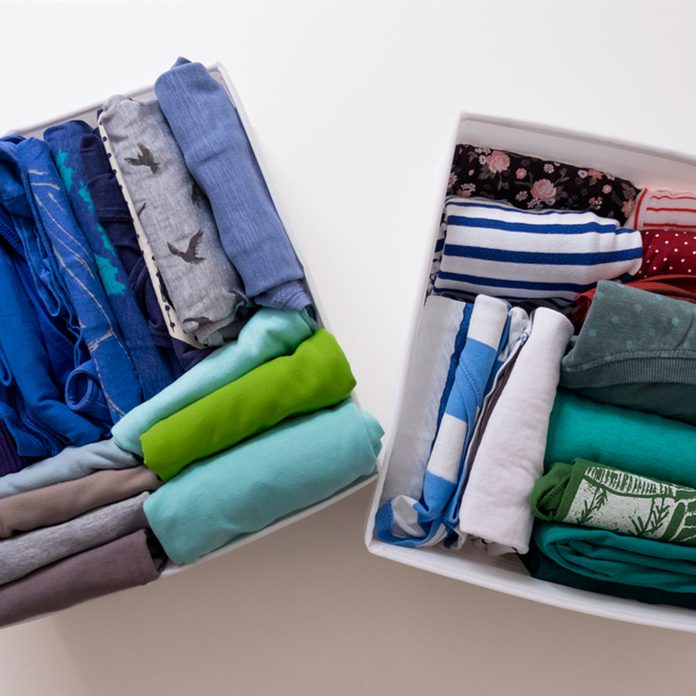
Stacking Your Shirts In Drawers Instead of Filing Them
When organizing expert Marie Kondo released her bestselling book “The Life-Changing Magic of Tidying Up,” readers were shocked to realize they’d been folding their shirts the wrong way their whole lives.
According to Kondo’s Konmari method, clothes should be folded and stored vertically in rows, like files in a filing cabinet, rather than stacked one on top of the other. This method not only lets you see all the contents of the drawer at once, but it saves space and prevents wrinkles, too. Kondo’s fans swear that this is the best way to store shirts. It’s a great solution for apartments or other small spaces where storage is scarce.
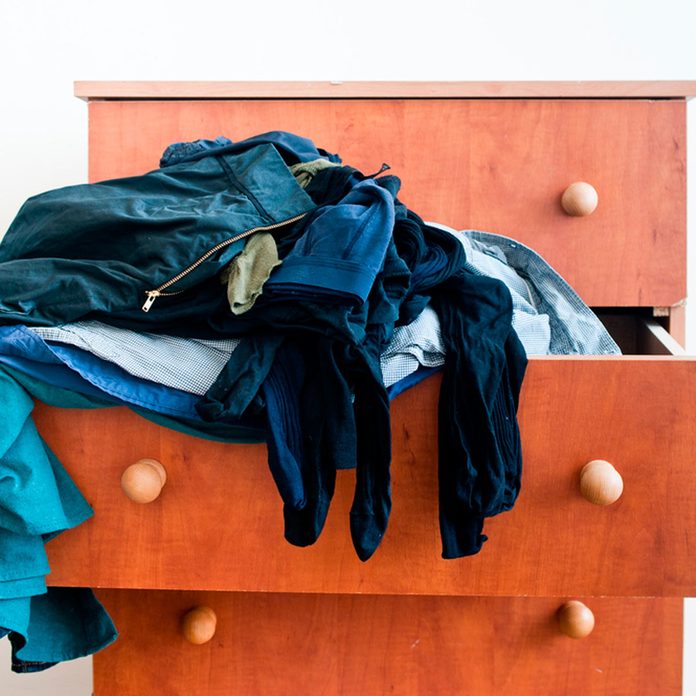
Over-Stuffing Your Drawers
Cramming clothes into your dresser rather than neatly folding everything creates more than just an eyesore. It’s so difficult to find things that you’ll frantically plumb the depths of your drawers whenever you’re getting dressed. Balling up your clothes can also weaken fabrics and drive your clothes into the donation pile that much faster. Even worse? This seemingly harmless habit can destroy your dresser before its time, too.

Ignoring the 80/20 Rule
According to the 80/20 rule, the average person only wears 20 percent of their clothes 80 percent of the time. So you should have the easiest access to the clothes you wear most often. The best way to store these clothes is right up front and right on top.
Chances are you actually never wear most of the remaining 80 percent of your wardrobe. Fortunately, there’s an easy way to check. To find out how much you do wear, professional organizers recommend turning all of your hangers backward at the beginning of the season.
Don’t turn the hanger forward until you’ve worn, laundered, and returned the item. At the end of the season (or year), take the clothes off whichever hangers are still backward and donate them. This way you can free up space for new things you actually love.

Storing Out-of-Season Garments Without Cleaning Them First
Jackets and coats take a beating. By the end of the season, they’ve absorbed grime, smoke, the elements—basically, everything you come in contact with, plus dirt and sweat from your own body. Stuffing soiled outerwear in the back of your closet or under your bed is more than just unsanitary—it allows stains to set in and can even weaken and fade fabrics. So plan for a laundry day and check the care tag to see whether you need to machine wash, hand wash, or dry clean your garment, then zip all zippers to prevent snags before going for the deep clean.
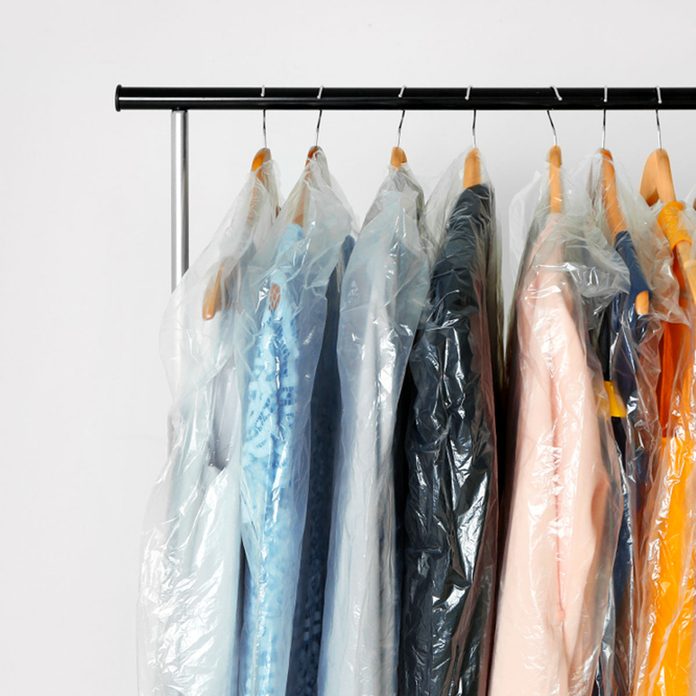
Storing Your Fresh Dry Cleaning In That Plastic-Wire Hanger Combo
It’s tempting to pick up that cocktail dress or suit from the dry cleaner and stick it in the closet as is, only to revisit it the next time you have a formal event. But your garments are not meant to live inside a suffocating plastic prison, where the fabric can weaken and even discolor from chemicals off-gassed by the plastic. Over time, the moisture trapped inside the plastic can even encourage mildew. And don’t even get us started on the wire hangers (see above).

Forgetting To Purge Before You Store
If you’re switching out clothes for the changing season, take this opportunity to purge your heart out. You may even relieve stress in the process. Hanging on to too many clothes is one of the most common clothing storage mistakes there is. If it seems too daunting, make it a family affair, with prize incentives for most items donated. All of these organizations offer pickup for items you don’t want.
FAQ
When is the best time of year to donate clothes?
The best time to donate or consign your clothes is just before the season for that type of clothing begins. For example, donate summer clothes in late spring and fall clothes in late summer.
“The beginning of spring and fall are also great times to recalibrate everything in your life,” says Elizabeth Dodson, co-founder of HomeZada. “However, donating clothes any time of year is good for those people who may need them. There are always people looking for opportunities to build confidence through wearing something new to them.”
Other good times include before holidays like Halloween and Christmas and when demand spikes, like around the start of school.
How do I keep mice and other pests out of my clothes storage?
Wash your clothes before you store them and pick the right type of bin for the clothing says Michele Vig, founder of Neat Little Nest. “It’s fine to put your jeans and cotton items into a plastic bin, but if you’re storing cashmere or wool, opt for a fabric bin with a lid so the clothes can breathe,” she says. “In either case, adding cedar pieces can also help keep pest away.”
For mice in particular, Dodson recommends adding, a pouch of lavender, cinnamon, cayenne pepper, cloves, black pepper or peppermint around your closet. Be careful not to add cayenne or black pepper too close to your clothes, though, as that could cause skin problems. Also seal up holes and cracks in your closet.
Courtney Cummings, owner of The Stylish Organizer also recommends not storing clothes on the ground and removing the plastic dry cleaning packaging when you return your clothes to your closet. “While you might think you are protecting your clothes, you are actually inviting in very small unwanted guests,” she says. “Ditch the plastic to allow your garment to breathe.”
About the Experts
- Courtney Cummings is founder of The Stylish Organizer, a professional organizing business based in Dayton, Ohio.
- Elizabeth Dodson is co-founder of HomeZada, and a home management, maintenance and organization expert.
- Michele Vig is founder of Neat Little Nest, a member of the National Association of Productivity and Organizing Professionals and author of The Holistic Guide to Declutter.
- Julie Leonard is a certified life and decluttering coach with more than 30 years of psychology, mental health and coaching experience. She is the creator of the Simplify Your Life coaching program and The Intentional Happiness Circle, and author of Intentional Happiness: The Life-Changing Guide to Being Happy and Staying Happy.



















